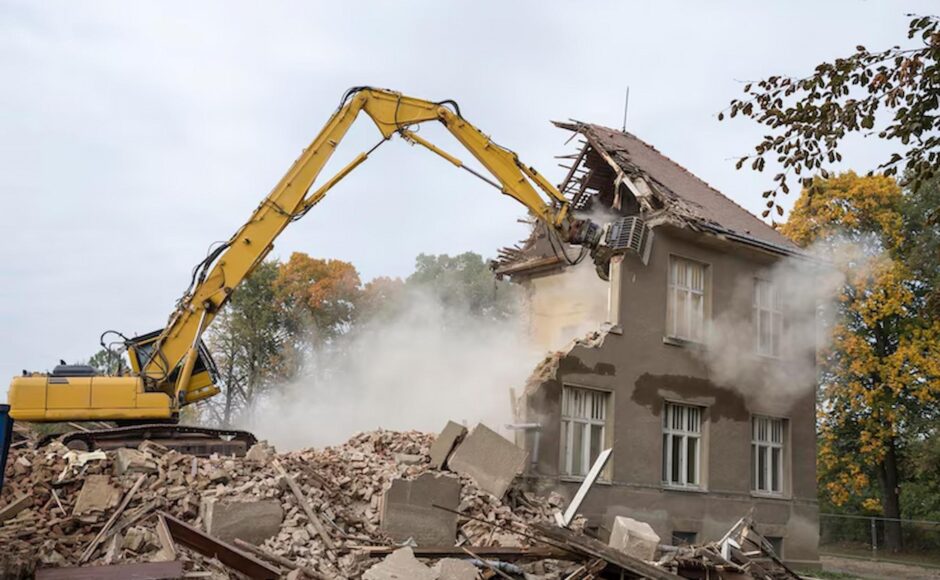Demolishing a house can be daunting, but with proper planning and execution, it can be a smooth and efficient process. Whether you’re clearing space for a new construction project or removing an old structure, ensuring safety and efficiency is paramount. This guide will walk you through the steps to plan and execute a safe and efficient whole-house demolition in Berkshire.
Understanding the Process
Before diving into the demolition process, it’s essential to understand what it entails. Whole house demolition involves dismantling and removing an entire structure, including its foundation. This process requires careful consideration of various factors, including safety regulations, environmental concerns, and logistical challenges.
Conduct a Site Assessment
Begin by assessing the site and the structure to be demolished. Identify potential hazards such as asbestos, lead paint, or structural weaknesses. Hire a qualified inspector to assess the building’s condition and recommend necessary precautions.
Obtain Permits and Approvals
Before commencing demolition, obtain the required permits and approvals from local authorities. Ensure compliance with building codes, zoning regulations, and environmental laws. Failure to obtain proper licenses can result in fines and delays.
Develop a Demolition Plan
Create a detailed demolition plan outlining the sequence of operations, equipment needed, waste disposal methods, and safety measures. Consider factors such as neighbouring structures, utilities, and access routes. Engage with experienced demolition contractors such as Demolition Berkshire to develop a comprehensive plan tailored to your requirements.
Safety First
Safety should always be the top priority during demolition. Implement safety protocols such as wearing protective gear, erecting barriers around the site, and securing utilities. Ensure all workers are trained in proper demolition techniques and emergency procedures.
Environmental Considerations
Dispose of demolition waste responsibly to minimise environmental impact. Recycle materials whenever possible and dispose of hazardous substances according to regulations. Consider salvaging reusable items such as fixtures, appliances, and building materials.
Execute Demolition Safely
Follow the demolition plan meticulously, using appropriate equipment and techniques. Start by removing interior fixtures and fittings before tackling structural elements. Employ manual demolition, mechanical demolition, or controlled explosives depending on the project scope and site conditions.
Waste Management
Manage demolition waste efficiently by segregating materials and arranging for proper disposal. Hire licensed waste disposal contractors to handle hazardous materials and recycle salvageable debris. Prioritise recycling and reuse to minimise landfill waste.
Site Cleanup
Once demolition is complete, thoroughly clean the site to remove debris and contaminants. Restore the area to its original condition or prepare it for future development. Conduct a final inspection to ensure compliance with safety and environmental standards.
Post-Demolition Assessment
After completing the demolition, conduct a thorough post-demolition assessment to evaluate the project’s success. Check for any remaining hazards, such as buried debris or environmental contamination. Address any issues promptly to prevent safety risks and ensure regulatory compliance.
Site Restoration and Redevelopment
Depending on your plans for the property, you may need to undertake site restoration or redevelopment. You can restore the landscape by grading the land, planting vegetation, and installing erosion control measures. If you intend to build a new structure, prepare the site according to architectural and engineering specifications.
Benefits of Professional Demolition Services
While DIY demolition may seem cost-effective, hiring professional demolition services offers numerous advantages. Experienced demolition contractors have the expertise, equipment, and resources to execute the project safely and efficiently. They also understand local regulations and can seamlessly navigate the permitting process.
Environmental Sustainability
In addition to safety and efficiency, environmental sustainability should be a priority during the demolition process. You can reduce the project’s ecological footprint by recycling materials, minimising waste, and responsibly disposing of hazardous substances. Choose demolition contractors who prioritise sustainability and eco-friendly practices.
Community Impact
Demolition projects can have a significant impact on the surrounding community. Consider noise, dust, and traffic disruption, and communicate with neighbours to minimise inconvenience. Implement mitigation measures such as dust control systems and schedule demolition activities during off-peak hours whenever possible.
Conclusion
Planning and executing a safe and efficient whole house demolition in Berkshire requires careful consideration of various factors, including safety, environmental sustainability, and community impact. Following the steps outlined in this guide and engaging with experienced professionals can achieve optimal results while minimising risks and maximising efficiency. Remember to prioritise safety, obtain necessary permits, and communicate effectively with stakeholders.




